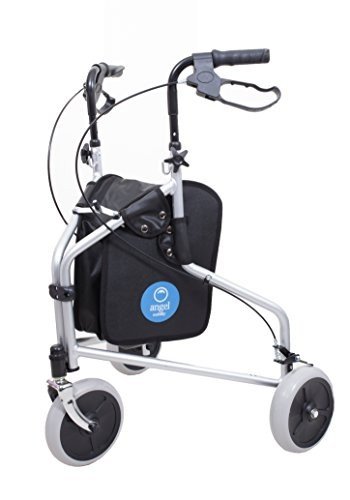10 Real Reasons People Dislike Mobility Scooter Mobility Scooter
A Comprehensive Guide to Buying a Mobility Scooter
Mobility scooters have actually become a crucial tool for many people looking to improve their self-reliance and mobility. With a vast selection of models and features readily available, picking the ideal mobility scooter can be daunting. This article provides an informative guide to assist customers navigate their choices, evaluate their needs, and make a notified purchase.
Comprehending Mobility Scooters
Mobility scooters are electric lorries created for people who experience mobility challenges. They are particularly useful for elders, those with disabilities, or people recuperating from injuries. Mobility scooters can vary widely in terms of style, functions, and rates.
Kinds Of Mobility Scooters
Before embarking on a purchase, it's essential to understand the different types of mobility scooters available:
Three-Wheel Scooters:
- Generally more maneuverable in tight spaces
- Lightweight and portable
- Ideal for indoor usage
Four-Wheel Scooters:
- Offer greater stability and balance
- Suitable for outside usage over various surfaces
- Typically have a longer battery life
Foldable/Portable Scooters:
- Designed to be quickly transferred and kept
- Can often fit in the trunk of a cars and truck
- Ideal for those who travel regularly
Durable Scooters:
- Built to accommodate bigger people
- Frequently included more robust features for outdoor usage
- Typically equipped with larger batteries for extended variety
Aspects to Consider When Buying a Mobility Scooter
1. Weight Capacity
Select a mobility scooter that can support the user's weight. Many scooters have a weight limitation varying from 250 to 500 pounds. It is crucial to ensure that the scooter can accommodate the user comfortably.
2. Range and Battery Life
The variety is how far the mobility scooter can take a trip on a single charge. mobility scooters for sale near me differ between 10 to 30 miles. Consider the user's daily activities and pick a scooter with an ideal range.
3. Scooter Dimensions
Consider the size of the scooter, including its weight and dimensions. A more compact scooter may be perfect for narrow hallways and tight areas, while bigger models use additional stability and convenience.
4. Terrain Capability
Assess where the scooter will mostly be used. If the user plans to travel mainly on pavement, a lightweight design might be sufficient. However, if the user requires to traverse gravel or unequal surfaces, consider a four-wheel scooter developed for off-road use.
Leading Features to Look For
Convenience
- Adjustable Seats: Look for scooters with cushioned and height-adjustable seats to make sure convenience during travel.
- Armrests: These enhance safety and support while browsing.
Security and Visibility
- Headlights and Taillights: Essential for nighttime use.
- Turn Signals and Reflectors: Improve exposure and safety while on the road.
User-Friendly Controls
- Joystick or Drive Controls: These must be intuitive and easy to manipulate.
- Easy-to-Read Displays: A control panel that shows battery life, speed, and distance can improve the user experience.
Additional Features
- Storage Compartments: These offer included benefit for carrying personal items while on the go.
- Weather condition Protection: Consider models with rain covers or windscreens if used in variable weather.
Expense Considerations
When budgeting for a mobility scooter, costs can vary anywhere from ₤ 500 to over ₤ 5,000 depending upon the model, features, and brand. Additional expenses might include:
- Extended Warranty: Protects against flaws and can conserve money in the long run.
- Devices: Optional functions, such as updated seats, lights, or storage options.
Feature
Expense Range
Basic Models
₤ 500 – ₤ 1,500
Mid-Range Models
₤ 1,500 – ₤ 3,000
High-End Models
₤ 3,000 – ₤ 5,000
Financing Options
Numerous sellers provide financing strategies, and some city government initiatives might offer grants or help for those in need. Examine prospective financial assistance with community resources or mobility service companies.
FAQs about Buying a Mobility Scooter
What is the difference between a mobility scooter and a wheelchair?
Mobility scooters are motorized and permit users to browse individually, while wheelchairs may need physical help or manual operation.
How do I keep a mobility scooter?
Regular maintenance involves checking battery life, cleaning the scooter, and inspecting tires and brakes. Constantly describe the user handbook for specific guidelines.
Can mobility scooters be utilized indoors?
Yes, many models are designed for both indoor and outdoor use. Nevertheless, three-wheel scooters tend to be much better fit for indoor navigation due to their tighter turning radius.
Are mobility scooters covered by insurance?
Some insurance coverage plans cover a part of the costs for mobility scooters if they are considered clinically required. Contact your service provider for particular information.
How fast can a mobility scooter go?
A lot of mobility scooters have an optimal speed ranging from 4 to 8 mph. Nevertheless, the proper pace might vary depending upon local regulations.
Getting a mobility scooter can substantially enhance one's independence and quality of life. By understanding the types, functions, and costs associated with mobility scooters, prospective purchasers can make knowledgeable decisions that suit their requirements and preferences. Personalization and thorough research study are key to ensuring fulfillment with this essential financial investment.
